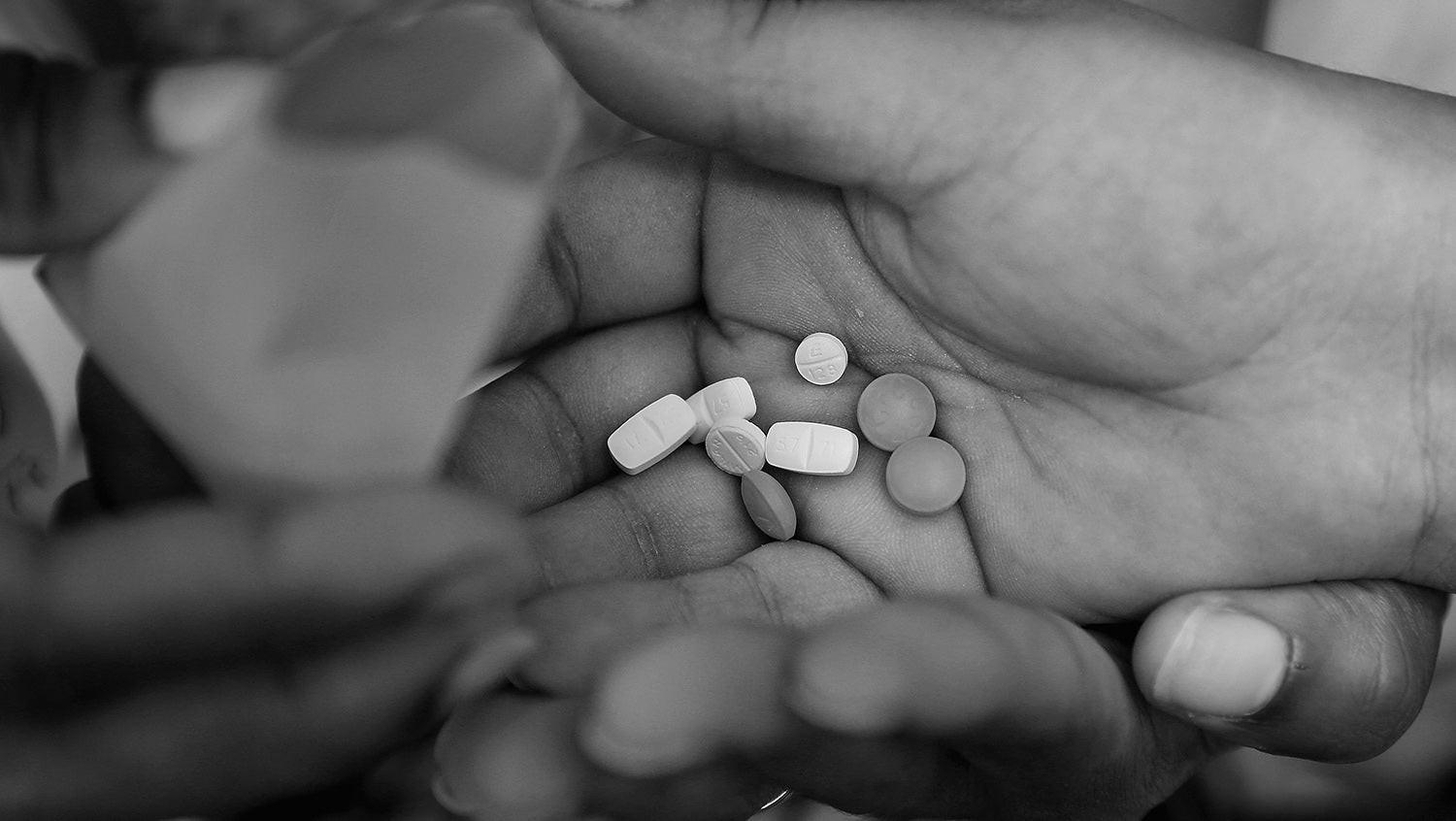
Getty Images
'People's experience could be so much more humane,' expert says on the impact of policy and pandemic response on people at risk of drug-related harms.
When Joseph Shay heard that a woman was overdosing across the street, he didn’t hesitate. “I just grabbed the Narcan and a facial barrier and ran over there,” he recalls.
The woman had vomited, and first responders at the scene were hanging back, reluctant to get close. Shay, who serves as team lead at Boston Medical Center’s Project TRUST harm reduction-focused drop-in center, worked quickly to reverse the overdose. When a gust of wind blew the barrier off her face, he took the surgical mask off his face and used it to cover her mouth so he could provide rescue breathing.
The woman survived, but the case illustrates one of the many problems that face people experiencing homelessness and who use drugs during the COVID-19 pandemic: bystanders and first responders who are reluctant to give aid due to fear of infection.
“Especially at the beginning, there was so much fear of transmission,” says Simeon Kimmel, MD, an infectious disease and addiction medicine specialist and Project TRUST’s medical director. “It just added to the stigma that many of our patients were already facing.”
At the start of the COVID-19 pandemic, clinicians and outreach workers feared that a disruption of services would lead to an increase in overdoses, infections, and other negative health outcomes for homeless people who use drugs. And early data indicate that’s exactly what happened, Kimmel says.
Overdoses and infectious disease
Since the first reported case of COVID-19, suspected overdoses have increased by an average of 20% nationwide over the same period last year, according to a report by the Overdose Detection Mapping Application Program, or ODMAP. The agency issued 345 spike alerts in March and 314 in April, versus 137 and 166 in the same months last year. (An ODMAP spike alert is triggered when overdose submissions increase two standard deviations above the mean in the past 24 hours for a particular county and state.) Overall, ODMAP-generated spike alerts have increased 191% in January–April 2020 compared to January–April 2019.
Suspected drug overdoses have increased by an average of 20% nationwide
Care providers and public health officials are also seeing increases in other negative health outcomes for this population. In Boston, Massachusetts Department of Public Health officials have warned of sustained high levels of new HIV diagnoses in people who inject drugs, with hepatitis C a common co-infection. Anecdotally, Kimmel notes that physicians are seeing later and more severe presentations of injection-related infections as people experiencing homelessness may delay seeking or receiving care during the pandemic.
It’s not just about disrupted healthcare services, say Kimmel and Shay. At Boston Medical Center, for example, the nearby community of people experiencing homelessness relied on hospital bathrooms not only for access to toilets, but also for fresh running water, personal hygiene and handwashing, and sometimes a safe place to use drugs. When the hospital began restricting access to the public due to COVID-19, those bathrooms were closed.
“Access to clean water, being able to actually use the bathroom, and washing your hands are key for this population, especially for things like skin infections,” Shay says.
How COVID has brought increased harms to people who use drugs
Government restrictions on public gathering, while intended to reduce the risk of COVID transmission, had the effect of breaking up communities experiencing homelessness, sending vulnerable people into more isolated areas.
“People watch over each other, take care of each other,” Shay says. “During the spring COVID surge, police and law enforcement were keeping people moving, so people tended to use drugs by themselves more often and in more isolated areas.” So if someone overdosed, they were less likely to get help.
Uncertainty about risk and transmission and lack of clear protocols early in the pandemic also contributed to concerns among first responders about how to deliver care to someone in an overdose while also protecting their own health. Now Project TRUST keeps an ambu bag at the ready for caregivers to grab as they run to deliver aid to someone who is overdosing.
Telehealth, policy, and harm reduction for better support and access
As providers have looked for new ways to serve patients during the pandemic, telehealth has shown potential to improve access, Shay and Kimmel say. Previously, patients were required to have an initial in-person visit with a physician before they could be prescribed buprenorphine for opioid use disorder. But those requirements were relaxed at the start of the pandemic. This allowed outreach staff to find patients on the street and link them to a clinical provider via telephone or virtual visit with Faster Paths, BMC’s low barrier buprenorphine clinic.
The program faced some challenges, including connectivity problems and background noise from the street. Outreach workers also had trouble locating patients whose routines had been disrupted by the pandemic, Shay notes. But they agreed the program was a major step forward.
“It’s a dramatic change in policy,” Kimmel says. “Deployed in the setting of a crisis, there were some challenges, but I’m hopeful these changes will stay, and telehealth will be another tool in our armamentarium to really engage with people.”
A more unconventional telehealth intervention is to encourage patients who are isolated due to social distancing rules to connect with a buddy virtually while using drugs.
“They can have someone on the phone or video, so if they stop responding, that person can help,” Kimmel says.
While the U.S. has struggled to support people experiencing homelessness and who use drugs during the pandemic, other countries have responded quickly, Kimmel says. For example, Canada has expanded access to supervised injections and drug consumption sites. Providers there have also worked to increase the availability of “safer supply” pharmaceutical-grade opioids for people with opioid addiction disorder to reduce potential exposure to drugs contaminated with fentanyl.
Similar policies could save lives and improve outcomes in the U.S., Kimmel says.
“People are out on the street because of the lack of treatment and the lack of places to use drugs,” he says. “This entire response could be so different, and people’s experience could be so much more humane, for patients and as well as for clinicians and caregivers.”
Interested in hearing more? In recognition of Recovery Month, Simeon Kimmel, MD and Joseph Shay will present a Grand Rounds on the intersection of public health, overdose, and SUD on September 23 at noon EST. Register for the event here.


